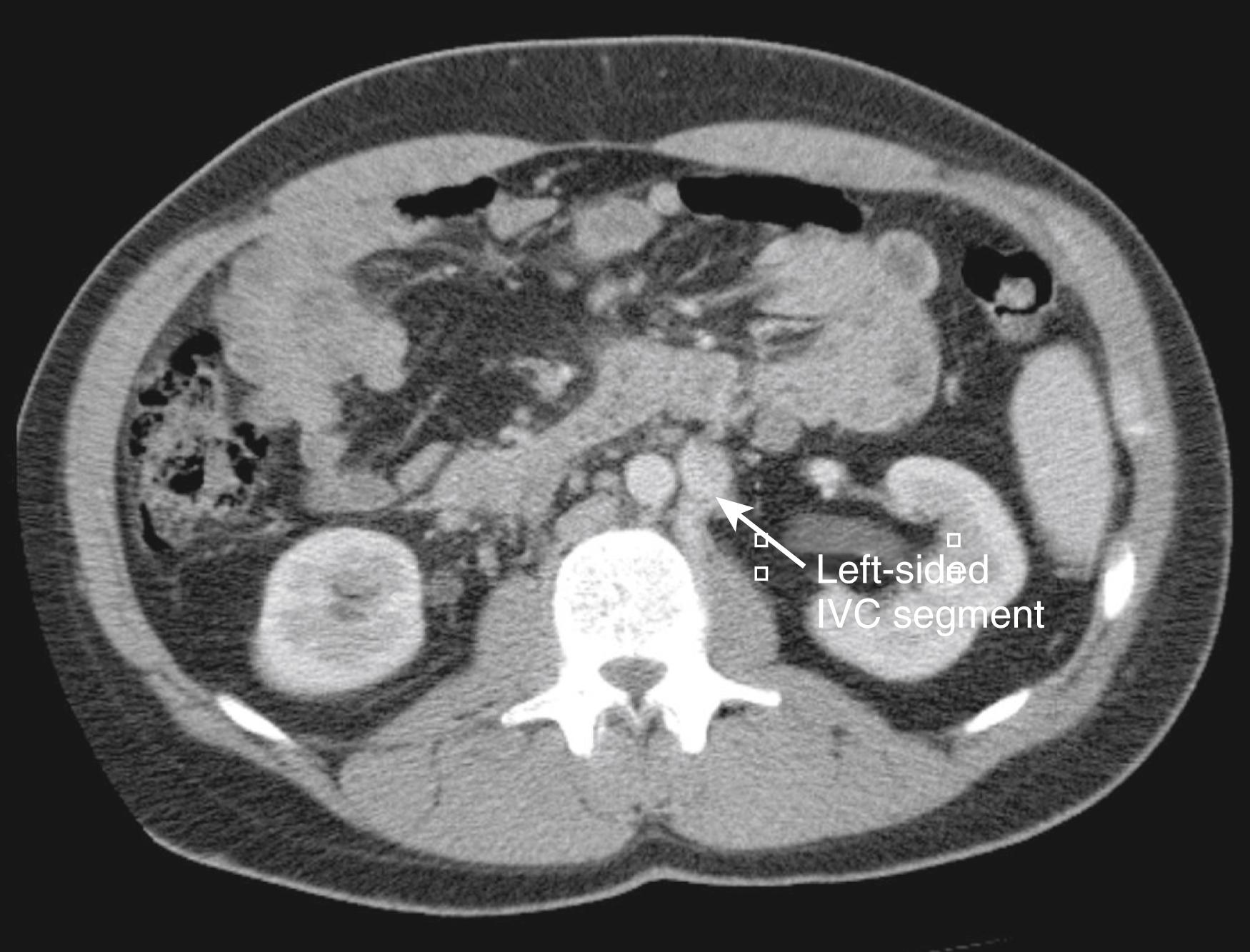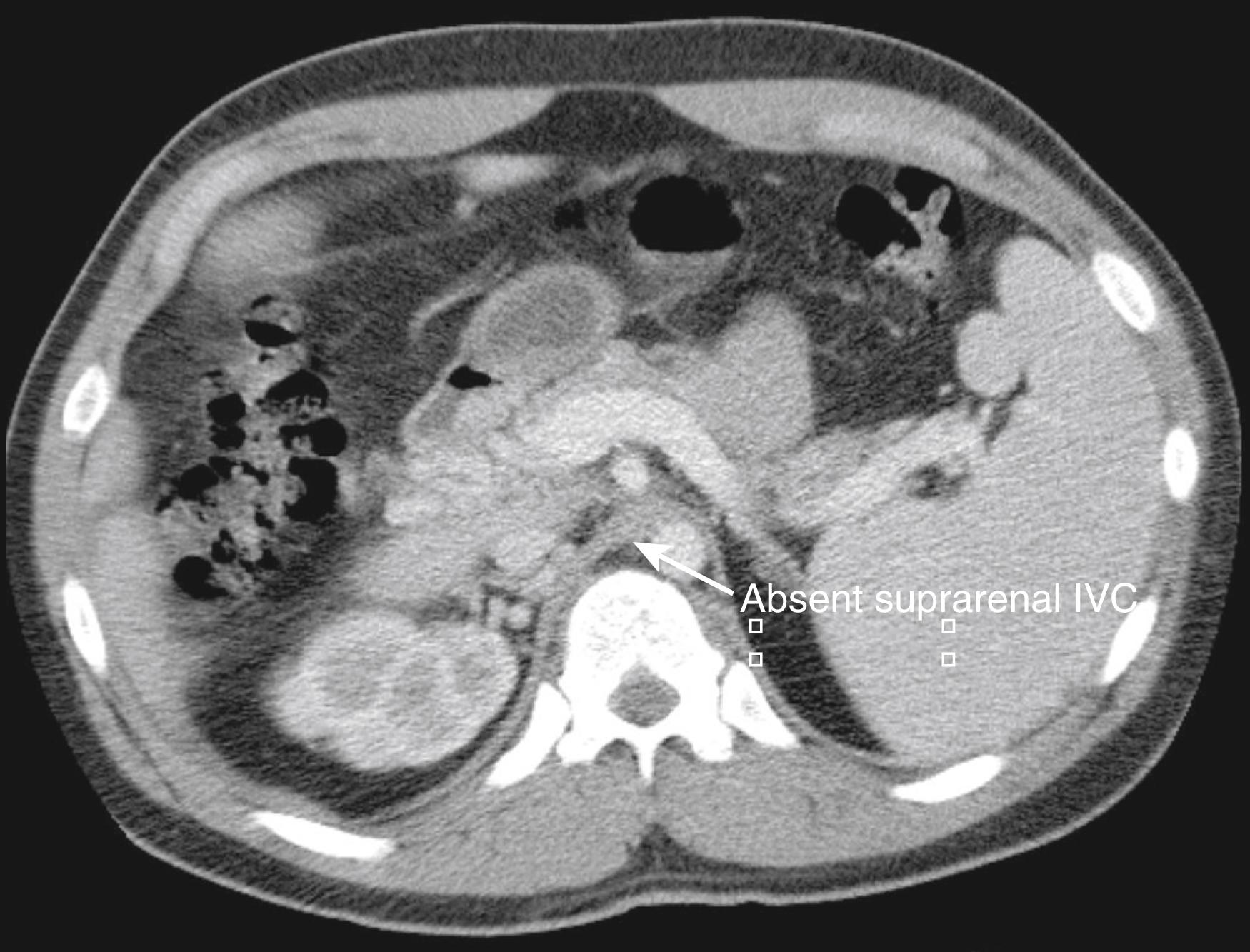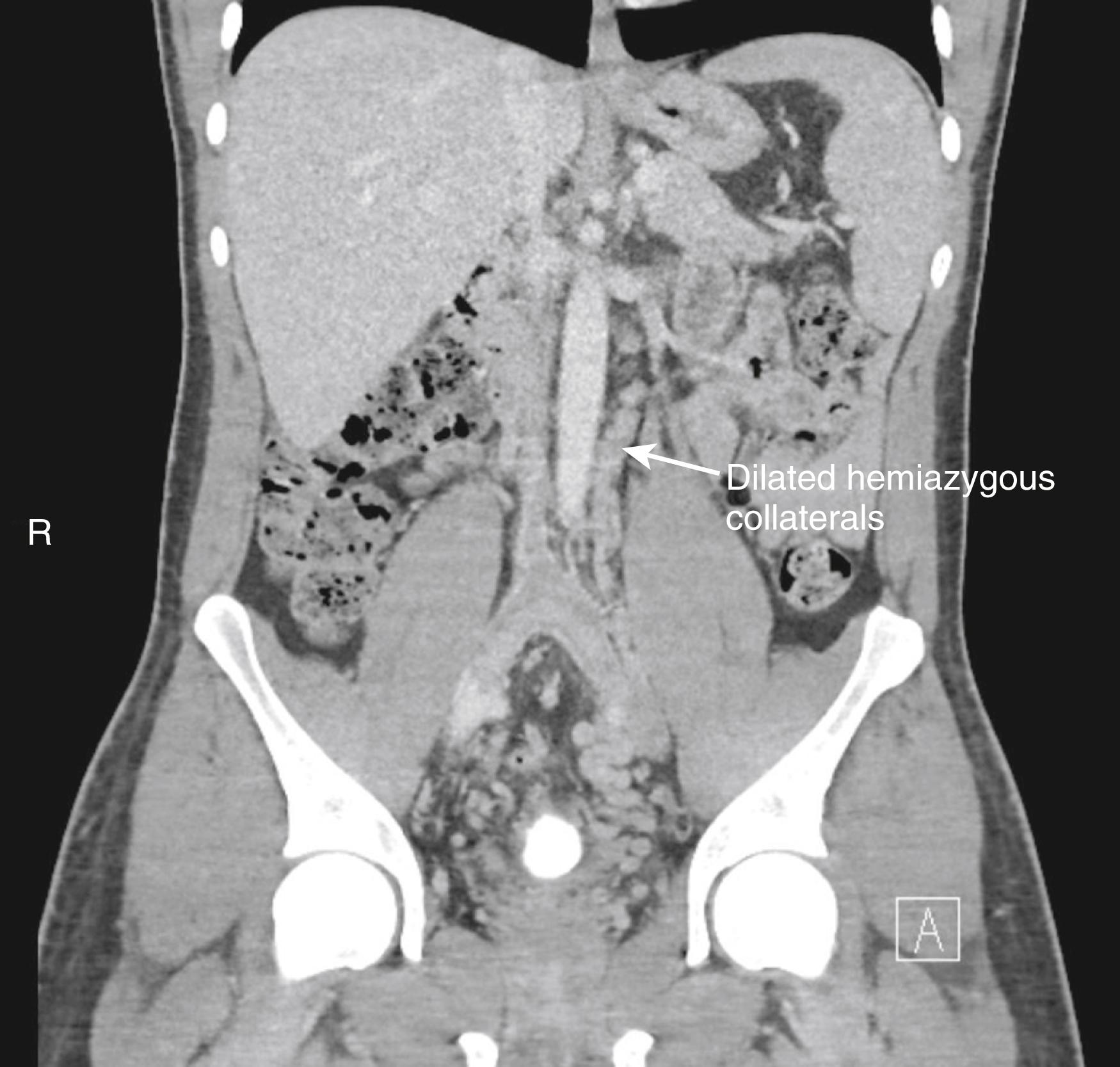Physical Address
304 North Cardinal St.
Dorchester Center, MA 02124
Congenital absence of the inferior vena cava (AIVC) is a rare entity and is often first detected in the setting of an idiopathic deep venous thrombosis (DVT) of the lower extremity. The overall incidence of AIVC in the general population has been estimated to be 0.3% to 0.5%, but it may be present in up to 5% of patients under the age of 30 with idiopathic DVT. This incidence was first noted by Ruggeri et al. in 2001. These authors noted that in their own review of published reports from 1966 to 1999, there were fewer than 10 cases of DVT in patients with AIVC. They also noted that this could have represented an underestimation, because the most common diagnostic imaging technique, the duplex scan, does not routinely include the abdominal veins. Indeed, dedicated abdominal duplex scanning or axial imaging is required to make the diagnosis.
It is likely that most cases of congenital absence of the IVC remain undiagnosed and are of little clinical consequence. However, it is the subset of patients presenting with an acute DVT that increases the complexity of management.
Several authors have noted an association of AIVC with DVT, particularly in young males. Congenital AIVC may create a low-flow state, making the lower extremity more susceptible to DVT, and thrombophilias, such as factor V Leiden or homocysteinemia, may increase the risk further. , Halparin et al. evaluated a pediatric population and noted that congenital AIVC does not seem to present with symptoms of DVT until at least the second decade of life. The authors suggest that for the anomaly to manifest as DVT, a second “hit” is required, consistent with the multifactorial etiology of DVTs. Venous collaterals appear to be able to compensate for the lack of a normal IVC but fail when the demands for venous drainage exceed the capacity of the collateral veins, with DVT then occurring via a mechanism of stasis. Factors in the pediatric and adolescent population that may increase the demand for venous drainage include strenuous physical activity, a growth spurt, or the presence of inherited or acquired thrombotic risk factors. Acquired factors include immobilization, trauma, surgery, malignancy, vascular catheterization, smoking, or the use of oral contraceptives.
AIVC may be associated with other congenital abnormalities, including atrial septal defects, polysplenia, or dysgenesis of the lungs. , The complex embryogenesis of the IVC begins at week 6, as it develops from three pairs of primitive veins, the supracardinal, subcardinal, and postcardinal veins. These veins form collaterals and connections during development but then regress, leading to a single continuous channel, the IVC.
The IVC can be divided into four segments, the hepatic, prerenal, postrenal, and renal collar. These segments arise from the primitive veins. The supracardinal vein gives rise to the postrenal IVC as well as the hemiazygos and azygos veins. The subcardinal vein gives rise to the prerenal portion, and the renal collar is formed from the subcardinal and supracardinal segments. Hepatic sinusoids form the hepatic segment. It has been proposed that AIVC may be caused by dysgenesis of this complex process or by an interruption of the process by an intrauterine insult. , The most common types of IVC anomalies are isolated left IVC, double IVC, atresia or agenesis of a segment or the total IVC, and azygos or hemiazygos continuation of the IVC ( Figs. 163.1–163.3 ). Regression of the right supracardinal vein with persistence of the left supracardinal vein results in a left IVC. If both the left and right supracardinal veins persist, there will be a double IVC. Atresia of a segment of the IVC or total IVC atresia is caused by failure of anastomosis of one (segmental AIVC) or multiple (total AIVC) segments of the IVC. ,



AIVC may be noted incidentally, or it may present with complications such as venous thromboembolic disease and associated sequelae.
Diagnosis of congenital absence or occlusion of the IVC relies on a high index of suspicion. For example, young patients (<40 years) are considered to be at lower risk for DVT. Therefore, in a young person with an unprovoked DVT, evaluation for hypercoagulability might be accompanied selectively by imaging for congenital anomalies of the deep venous system. This may hold true in even more particular circumstances, such as young patients presenting with extensive bilateral iliofemoral thrombosis or with physical exam findings of extensive collateralization (i.e., abdominal wall varicosities). As noted previously, up to 5% of individuals between 20 and 40 years of age who develop a DVT may have an underlying congenital anomaly of the IVC.
Become a Clinical Tree membership for Full access and enjoy Unlimited articles
If you are a member. Log in here